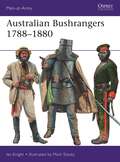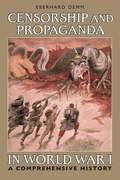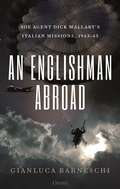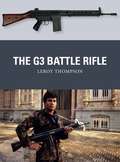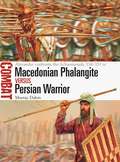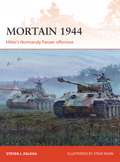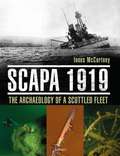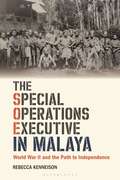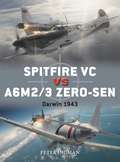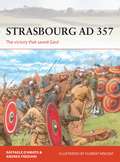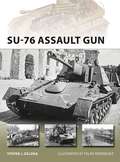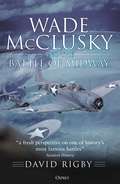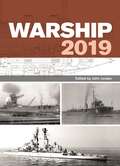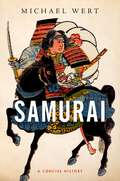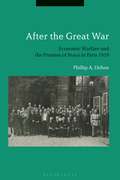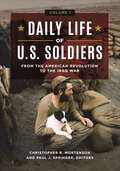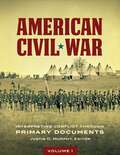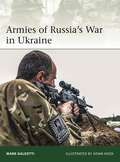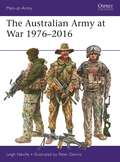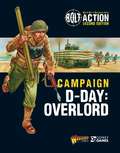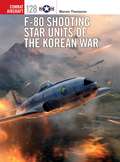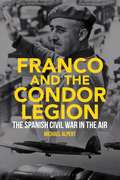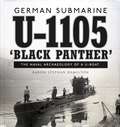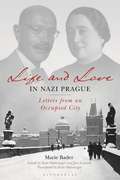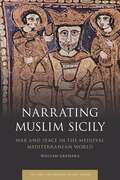- Table View
- List View
Australian Bushrangers 1788–1880 (Men-at-Arms)
by Ian KnightThe first 'bushrangers' or frontier outlaws were escaped or time-expired convicts, who took to the wilderness – 'the bush' – in New South Wales and on the island of Tasmania. Initially, the only Crown forces available were redcoats from the small, scattered garrisons, but by 1825 the problem of outlawry led to the formation of the first Mounted Police from these soldiers. The gold strikes of the 1860s attracted a new group of men who preferred to get rich by the gun rather than the shovel. The roads, and later railways, that linked the mines with the cities offered many tempting targets and were preyed upon by the bushrangers. This 1860s generation boasted many famous outlaws who passed into legend for their boldness. The last outbreak came in Victoria in 1880, when the notorious Kelly Gang staged several hold-ups and deliberately ambushed the pursuing police. Their last stand at Glenrowan has become a legendary episode in Australian history. Fully illustrated with some rare period photographs, this is the fascinating story of Australia's most infamous outlaws and the men tasked with tracking them down.
Censorship and Propaganda in World War I: A Comprehensive History (International Library of Twentieth Century History)
by Eberhard DemmThis book demonstrates how people were kept ignorant by censorship and indoctrinated by propaganda. Censorship suppressed all information that criticized the army and government, that might trouble the population or weaken its morale. Propaganda at home emphasized the superiority of the fatherland, explained setbacks by blaming scapegoats, vilified and ridiculed the enemy, warned of the disastrous consequences of defeat and extolled duty and sacrifice. The propaganda message also infiltrated entertainment and the visual arts. Abroad it aimed to demoralize enemy troops and stir up unrest among national minorities and other marginalized groups. The many illustrations and organograms provide a clear visual demonstration of Demm's argument.
An Englishman Abroad: SOE agent Dick Mallaby’s Italian missions, 1943–45
by Gianluca BarneschiBased on 20 years of research, Gianluca Barneschi has uncovered the true story of a real-life James Bond. The debonair Special Operations Executive agent Richard 'Dick' Mallaby was the first Briton to be sent to Italy as an SOE operative, parachuted unceremoniously into Lake Como in August 1943. Arrested and initially tortured by the Italian authorities, he managed to sweet-talk his way out of trouble, and helped Marshal Pietro Badoglio and King Victor Emmanuel III escape to the Allied lines. He also helped negotiate the armistice with Italy, for which he was awarded the Military Cross. He was back in action in 1945, when he crossed into Fascist-controlled northern Italy from Switzerland but was swiftly captured and interrogated by the SS. Narrowly avoiding a firing squad once again, he helped to secure the surrender of 800,000 German forces in Italy in May 1945.
The G3 Battle Rifle (Weapon)
by Leroy ThompsonDuring the Cold War, the G3 was one of the world's pre-eminent battle rifles. Developed in France and Spain after 1945, the rifle was produced by the German arms manufacturer Heckler & Koch. Adopted by more than 40 countries and produced on licence by many more, it was widely employed during colonial wars in Africa, insurgencies in Latin America and conflicts in the Middle East, but perhaps its widest use was in the Iran–Iraq War. Variants of the G3 have also seen substantial usage among Special Forces including Britain's Special Boat Service and the US Navy SEALs. Semi-automatic versions, especially the HK91 and HK93, remain popular in the United States, and the G3-derived HK11 and HK21 family of light machine guns have also been widely adopted by military and law-enforcement units across the world. Fully illustrated with specially commissioned artwork, this study examines one of the iconic weapons of the Cold War era.
Macedonian Phalangite vs Persian Warrior: Alexander confronts the Achaemenids, 334–331 BC (Combat)
by Murray DahmIn August 334 BC, Alexander the Great invaded the Persian Empire and systematically set about its conquest. At the core of Alexander's army were 10,000 members of the phalanx, the phalangites. Armed with a long pike and fighting in formations up to 16 ranks deep, these grizzled veterans were the mainstay of the Macedonian army. Facing them were the myriad armies of the peoples that made up the Persian Empire. At the centre of these forces was the formation known as the Immortals: 10,000 elite infantry, armed with spears and bows. In this study, a noted authority assesses the origins, combat role and battlefield performance of Alexander's phalangites and their Persian opponents in three key battles of the era – the Granicus River, Issus and Gaugamela – at the dawn of a new way of waging war.
Mortain 1944: Hitler’s Normandy Panzer offensive (Campaign)
by Steven J. ZalogaFollowing the successful landings in Normandy on D-Day and consolidation during Operation Cobra, the Wehrmacht was ordered to begin a counter-offensive named Operation Lüttich. The plan was to send a large Panzer force across the First US Army sector, cutting off its spearheads, and finally reach Avranches on the coast. Had this succeeded, it not only would have cut off the First US Army spearheads, but also Patton's newly deployed Third US Army operating in Brittany. However, thanks to an intercepted radio message, the Allies were well-prepared for the offensive and not only repelled the oncoming panzers, but went on a counter-attack that would lead to a whole German army becoming encircled in the Falaise Pocket. Fully illustrated with stunning full-colour artwork, this book tells the story of Operation Lüttich, the failed offensive which ended any prospect of Germany winning the battle of Normandy.
Scapa 1919: The Archaeology of a Scuttled Fleet
by Innes McCartneyThe German High Seas Fleet was one of the most powerful naval forces in the world, and had fought the pride of the Royal Navy to a stalemate at the battle of Jutland in 1916. After the armistice was signed, ending fighting in World War I, it surrendered to the British and was interned in Scapa Flow pending the outcome of the Treaty of Versailles. In July 1919 the entire fleet attempted to sink itself in the Flow to prevent it being broken up as war prizes. Of the 74 ships present, 52 sunk and 22 were prevented from doing so by circumstance and British intervention. Marine archaeologist and historian Dr Innes McCartney reveals for the first time what became of the warships that were scuttled, examining the circumstances behind the loss of each ship and reconciling what was known at the time to what the archaeology is telling us today. This fascinating study reveals a fleet lost for nearly a century beneath the waves.
The Special Operations Executive in Malaya: World War II and the Path to Independence
by Rebecca KenneisonDuring World War II, agents of the Special Operations Executive (SOE) infiltrated Japanese-occupied Malaya. There they worked with Malayan guerrilla groups, including the communist-sponsored Malayan Peoples Anti-Japanese Army (MPAJA), regarded as the precursor of the communist insurgent army of the Malayan Emergency. This book traces the development of SOE's Malayan operations, and analyses the interactions between SOE and the various guerrilla groups. It explores the reasons for and the extent of Malay disillusionment with Japanese rule, and demonstrates how guerrilla service acted as a training ground for some later Malay leaders of the independent nation. However, the reports written about the MPAJA by SOE operatives just after the war failed to draw out the likely future threat posed by the communists to the returning colonial administration. Rebecca Kenneison shows that the British possessed a wealth of local information, but failed to convert it into active intelligence in the period prior to the Malayan Emergency. In doing so she provides new insights into the impact of SOE on Malayan politics, the nature of Malayan communism's challenge to colonial rule, and British post-war intelligence in Malaya.
Spitfire VC vs A6M2/3 Zero-sen: Darwin 1943 (Duel)
by Peter IngmanJust weeks after Pearl Harbor, Darwin was mauled by a massive Japanese attack. Without a single fighter to defend Australian soil, the Australian government made a special appeal to Britain for Spitfires. A year later the Spitfire VC-equipped No 1 Fighter Wing, RAAF, faced the battle-hardened 202nd Kokutai of the IJNAF, equipped with A6M2 Zero-sens, over Darwin. This was a gruelling campaign between evenly matched foes, fought in isolation from the main South Pacific battlegrounds. Pilots on either side had significant combat experience, including a number of Battle of Britain veterans. The Spitfire had superior flight characteristics but was hampered by short range and material defects in the tropical conditions, while the Japanese employed better tactics and combat doctrine inflicting serious losses on the over-confident Commonwealth forces. Fully illustrated with detailed full-colour artwork, this is the gripping story of two iconic aircraft facing off against each other above Australia.
Strasbourg AD 357: The victory that saved Gaul (Campaign)
by Raffaele D’Amato Andrea FredianiCivil war in the Western Roman Empire between AD 350–53 had left the frontiers weakly defended, and the major German confederations along the Rhine – the Franks and Alemanni – took advantage of the situation to cross the river, destroy the Roman fortifications along it and occupy parts of Roman Gaul. In 355, the Emperor Constantius appointed his 23-year-old cousin Julian as his Caesar in the provinces of Gaul with command of all troops in the region. Having recaptured the city of Cologne, Julian planned to trap the Alemanni in a pincer movement, but when the larger half of his army was forced into retreat, he was left facing a much larger German force outside the walls of the city of Strasbourg. This new study relates the events of this epic battle as the experience and training of the Roman forces prevailed in the face of overwhelming German numbers.
SU-76 Assault Gun (New Vanguard)
by Steven J. ZalogaThe SU-76 assault gun was the second most widely manufactured Soviet armoured fighting vehicle of World War II, out-numbered only by the legendary T-34. Inspired in part by the German Marder series of tank destroyers, Soviet designers realized that the chassis of the obsolete T-70 light tank could be adapted to a much more substantial gun if it was placed in a fixed casemate rather than in a turret. This led to the design of the SU-76, which saw its combat debut at Kursk in the summer of 1943. The SU-76 was deployed primarily as an infantry direct support weapon, becoming the infantry tank of the Red Infantry, much as the StuG III became the infantry tank of the German infantry. Featuring full colour artwork and written by an expert on tank warfare during World War II, this fascinating study describes one of the Soviet Union's most important armoured vehicles during its struggle with Nazi Germany.
Wade McClusky and the Battle of Midway
by David RigbyDuring the Battle of Midway in June 1942, US Navy dive bomber pilot Wade McClusky proved himself to be one of the greatest pilots and combat leaders in American history, but his story has never been told – until now. It was Wade McClusky who remained calm when the Japanese fleet was not where it was expected to be. It was he who made the counterintuitive choice to then search to the north instead of to the south. It was also McClusky who took the calculated risk of continuing to search even though his bombers were low on fuel and may not have enough to make it back to the Enterprise. His ability to remain calm under enormous pressure played a huge role in the US Navy winning this decisive victory that turned the tide of war in the Pacific. This book is the story of exactly the right man being in exactly the right place at exactly the right time. Wade McClusky was that man and this is his story.
Warship 2019
by John JordanFor over 40 years, Warship has been the leading annual resource on the design, development, and deployment of the world's combat ships. Featuring a broad range of articles from a select panel of distinguished international contributors, this latest volume combines original research, new book reviews, warship notes, an image gallery, and much more, maintaining the impressive standards of scholarship and research with which Warship has become synonymous. In the 2019 edition of this celebrated title, articles include Hans Lengerer's exploration of the genesis of the Six-Six Fleet, Michele Cosentino's look at Project 1030, Italy's attempt to create a torpedo-armed attack and ballistic missile submarines, and A D Baker III's drawing feature on the USS Lebanon. Detailed and accurate information is the keynote of all the articles, which are fully supported by plans, data tables and stunning photographs.
Samurai: A Concise History
by Michael WertThe idea of the sword-wielding samurai, beholden to a strict ethical code and trained in deadly martial arts, dominates popular conceptions of the samurai. As early as the late seventeenth century, they were heavily featured in literature, art, theater, and even comedy, from the Tale of the Heike to the kabuki retellings of the 47 Ronin. This legacy remains with us today in the legendary Akira Kurosawa films, the shoguns of HBO's Westworld, and countless renditions of samurai history in anime, manga, and video games. Acknowledging these common depictions, this book gives readers access to the real samurai as they lived, fought, and served. Much as they capture the modern imagination, the samurai commanded influence over the politics, arts, philosophy and religion of their own time, and ultimately controlled Japan from the fourteenth century until their demise in the mid-nineteenth century. On and off the battlefield, whether charging an enemy on horseback or currying favor at the imperial court, their story is one of adventures and intrigues, heroics and misdeeds, unlikely victories and devastating defeats. This book traces the samurai throughout this history, exploring their roles in watershed events such as Japan's invasions of Korea at the close of the sixteenth century and the Satsuma Rebellion of 1877. Coming alive in these accounts are the samurai, both famed and ordinary, who shaped Japanese history.
After the Great War: Economic Warfare and the Promise of Peace in Paris 1919
by Phillip DehneAt the Paris Peace Conference of 1919, the international community came together to find a way forward in the aftermath of the First World War. The conference is often judged a failure, as the resulting Treaty of Versailles did not bring long-term peace with Germany. By following the activities of British delegate and wartime Minister of Blockade Lord Robert Cecil, this book examines the struggles and successes of the conference, as delegates from around the world grappled with the economic, political and humanitarian catastrophes overwhelming Europe in 1919. After the Great War describes, for the first time, the significant role of economic warfare at the Peace Conference and in the post-war settlement. Lord Cecil's sometimes difficult partnership with US President Woodrow Wilson forged a new, permanent, international diplomatic organization – the League of Nations – and supplied it with the power to create collective blockades against aggressive states. Leaders of the Allied economic war before the Armistice became, in Paris, leaders of humanitarian-minded international outreach to their former enemies in Germany and Austria. After the Great War promotes a new understanding of these underappreciated internationalists in Paris, many of whom transitioned into leading the League of Nations even before the Peace Conference ended. Often derided as an idealistic fantasy, international peace enforced by economic sanctions appeared a realistic possibility when the Treaty was signed at the end of June 1919.
Daily Life of U.S. Soldiers [3 volumes]: From the American Revolution to the Iraq War [3 volumes]
This ground-breaking work explores the lives of average soldiers from the American Revolution through the 21st-century conflicts in Afghanistan and Iraq.What was life really like for U.S. soldiers during America's wars? Were they conscripted or did they volunteer? What did they eat, wear, believe, think, and do for fun? Most important, how did they deal with the rigors of combat and coming home? This comprehensive book will answer all of those questions and much more, with separate chapters on the American Revolution, the War of 1812, the Mexican-American War, the Civil War, the Indian Wars, the Spanish-American War, World War I, World War II in Europe, World War II in the Pacific, the Cold War, the Korean War, the Vietnam War, the Persian Gulf War, the Afghanistan War and War on Terror, and the Iraq War.Each chapter includes such topical sections as Conscription and Volunteers, Training, Religion, Pop Culture, Weaponry, Combat, Special Forces, Prisoners of War, Homefront, and Veteran Issues. This work also examines the role of minorities and women in each conflict as well as delves into the disciplinary problems in the military, including alcoholism, drugs, crimes, and desertion. Selected primary sources, bibliographies, and timelines complement the topical sections of each chapter.
American Civil War [2 volumes]: Interpreting Conflict through Primary Documents [2 volumes]
By providing detailed analyses of Civil War primary sources, this book will help readers to understand the history of the bloodiest of all American conflicts.This meticulously curated collection of primary source documents covers every aspect of the American Civil War, from its origins to its bloody engagements, all the way through the Reconstruction period. With approximately 300 primary sources, this comprehensive set includes orders and reports of significant battles, political debates and speeches, legislation, court cases, and literary works from the Civil War era. The documents provide insight into the thinking of all participants, drawing upon a vast range of sources that offer both a Northern and Southern perspective.The book gives equal treatment to the Eastern and Western Theaters and to Union and Confederate sources, and the primary sources are presented in chronological order, making it easy for readers to compare and contrast documents as the key events of the conflict unfold. Each primary source begins with an introduction that sets the document in its proper context and concludes with an analysis of the document that will help students to understand the document's significance.
Armies of Russia's War in Ukraine (Elite)
by Mark GaleottiIn February 2014, street protests in Kiev and other Ukrainian cities led to the ousting of the Russian-backed President Yanukovych. The so-called Euromaidan Revolution saw many changes to Ukraine's constitution, but the violent reaction in the east and south of the country led to armed counter-revolution, unofficially backed by Russia.This conflict is the essential example of Russia's new policy of 'hybrid warfare', which blends propaganda, misinformation, and the deployment of 'deniable' Special Forces and regular troops alongside proxies and mercenaries to achieve its strategic ends. Using his extensive contacts in both Russia and Ukraine, and access to a mass of official and unofficial sources, Mark Galeotti presents a thorough and intriguing primer on all the forces involved in the ongoing conflict in Ukraine. Supported by specially commissioned artwork, he analyses both the progress of the war, and what it teaches us about Russia's current military capabilities.
The Australian Army at War 1976–2016 (Men-at-Arms)
by Leigh NevilleSince the end of their involvement in the Vietnam War, the Australian Army has been modernized in every respect. After peacekeeping duties in South-East Asia, Africa and the Middle East in the 1980s–90s, 'Diggers' were sent to safeguard the newly independent East Timor from Indonesian harassment in 1999, and to provide long-term protection and mentoring since 2006. Australian Army units have served in the US-led wars in Iraq and Afghanistan, and Australian Special Forces are currently operating alongside US and British elements against ISIS in northern Iraq. During these campaigns the Australian SAS Regiment and Commandos have fully matured into 'Tier 1' assets, internationally recognized for their wide range of capabilities. The book, written by an Australian author who has written extensively about modern warfare, traces the development of the Army's organization, combat uniforms, load-bearing equipment, small arms and major weapon systems using specially commissioned artwork and photographs.
Bolt Action: Campaign: D-Day: Overlord (Bolt Action)
by Warlord GamesFrom the scaling of Pointe-du-Hoc and the assault on Pegasus Bridge, to the landings on the Utah, Omaha, Gold, Juno, and Sword beaches, this new Campaign Book for Bolt Action allows players to take command of the Allied Forces or those of the defending Axis. Featuring new linked scenarios, rules, troop types, and Theatre Selectors, this volume provides plenty of options for both novice and veteran players looking to recreate these famous battles and begin the liberation of Europe.
F-80 Shooting Star Units of the Korean War (Combat Aircraft)
by Warren ThompsonBuilt within a 180-day time limit in 1943, the F-80 Shooting Star first saw service in Italy in the final year of World War 2, and consequently was sent to bases in the US, Europe and the Far East after VJ Day. It was the latter groups based in Japan that initially bore the brunt of the early fighting in Korea, engaging MiG-15s in the world's first jet-versus-jet combat. Flown principally by the 8th and 49th Fighter Bomber Wings, the F-80 served until the end of the war, completing an astonishing 98,515 combat sorties, shooting down 17 aircraft (including three of the vastly superior MiG-15s), dropping over 33,000 tons of bombs, and firing over 80,000 air-to-ground rockets. Aside from the fighter-bomber Shooting Stars, the ultra-rare, but heavily used, photo-reconnaissance RF-80A saw extensive use in the frontline in Korea as a replacement for the vulnerable RF-51D. Filled with first-hand accounts and rare colour photographs taken by the veterans themselves, this is the engrossing story of the pioneering F-80 Shooting Star.
Franco and the Condor Legion: The Spanish Civil War in the Air
by Michael AlpertThe Spanish Civil War was fought on land and at sea but also in an age of great interest in air warfare and the rapid development of warplanes. The war in Spain came a turning point in the development of military aircraft and was the arena in which new techniques of air war were rehearsed including high-speed dogfights, attacks on ships, bombing of civilian areas and tactical air-ground cooperation. At the heart of the air war were the Condor Legion, a unit composed of military personnel from Hitler's Germany who fought for Franco's Nationalists in Spain. In this book, Michael Alpert provides the first study in English of the Spanish Civil War in the air. He describes and analyses the intervention of German, Italian and Soviet aircraft in the Spanish conflict, as well as the supply of aircraft in general and the role of volunteer and mercenary airmen. His book provides new perspectives on the air war in Spain, the precedents set for World War II and the possible lessons learnt.
German submarine U-1105 'Black Panther': The naval archaeology of a U-boat
by Aaron Stephan HamiltonNow in its final resting place at the bottom of the Potomac River in Maryland, the U-Boat U-1105 is unique among German World War II submarines. Technologically innovative, it was the only U-Boat to conduct a wartime patrol while equipped with the snorkel, GHG Balkon passive sonar and a rubberized coating known as Alberich designed to reduce its acoustic signature and hide from Allied sonar. After the end of World War II, it was the subject of instense testing and evaluation by the Allies, before finally being sunk to the bottom of the Potomac River.This highly illustrated book uses many new and previously unpublished images to tell the full story of this remarkable U-Boat, evaluating the effectiveness of its late war technologies, document its extensive postwar testing and detail all the features still present on the wreck site today.
Life and Love in Nazi Prague: Letters from an Occupied City
by Marie BaderPrague, 1940-1942. The Nazi-occupied city is locked in a reign of terror under Reinhard Heydrich. The Jewish community experience increasing levels of persecution, as rumours start to swirl of deportation and an unknown, but widely feared, fate. Amidst the chaos and devastation, Marie Bader, a widow age 56, has found love again with a widower, her cousin Ernst Löwy. Ernst has fled to Greece and the two correspond in a series of deeply heartfelt letters which provide a unique perspective on this period of heightening tension and anguish for the Jewish community. The letters paint a vivid, moving and often dramatic picture of Jewish life in occupied Prague, the way Nazi persecution affected Marie, her increasingly strained family relationships, as well as the effect on the wider Jewish community whilst Heydrich, one of the key architects and executioners of the Holocaust and Reich Protector in Bohemia and Moravia, established the Theresienstadt ghetto and began to organize the deportation of Jews. Through this deeply personal and moving account, the realities of Jewish life in Heydrich's Prague are dramatically revealed.
Narrating Muslim Sicily: War and Peace in the Medieval Mediterranean World (Early and Medieval Islamic World)
by William GranaraIn 902 the last Byzantine stronghold in Sicily fell, and the island would remain under Muslim control until the arrival of the Normans in the eleventh century. Drawing on a lifetime of translating and linguistic experience, William Granara here focuses on the various ways in which medieval Arab historians, geographers, jurists and philologists imagined and articulated their ever-changing identities in this turbulent period. All of these authors sought to make sense of the island's dramatic twists, including conquest and struggles over political sovereignty, and the painful decline of social and cultural life. Writing about Siqilliya involved drawing from memory, conjecture and then-current theories of why nations and people rose and fell. In so doing, Granara considers and translates, often for the first time, a vast range of primary sources - from the master chronicles of Ibn al-Athir and Ibn Khadun to biographical dictionaries, geographical works, legal treatises and poetry - and modern scholarship not available in English. He charts the shift from Sicily as 'warrior outpost' to vital and productive hub that would transform the medieval Islamic world, and indeed the entire Mediterranean.
